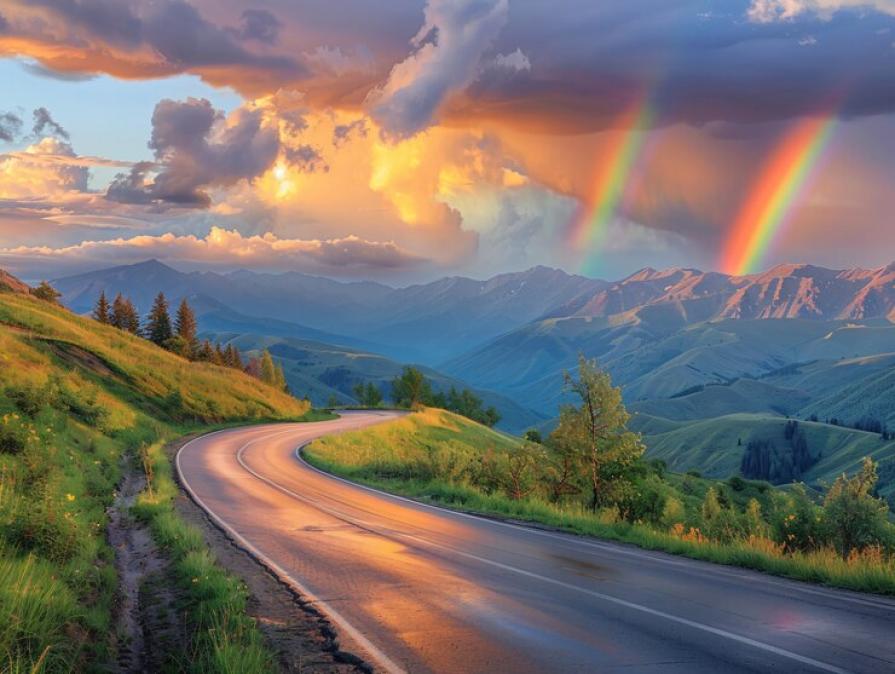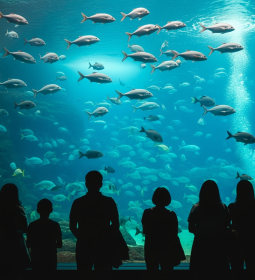Everyone likes to observe beautiful natural phenomena. Sunset, downpour, fluffy snowfall, sunrise and even rain are spectacles that fascinate with their beauty! If a person finds himself in a certain place at the right time, he will have the opportunity to observe a unique natural event, the beauty of which will be remembered for a long time. Nature does not have bad weather, and the unusual but beautiful phenomena described below are a confirmation of this.
Ring Rainbow
A rainbow is always a complete circle, but we cannot see its entire length because we are not high enough and see only the usual arcuate shape. If a person climbs higher - climbs the mountains or gains altitude on an airplane - he will be able to see the full ring of the rainbow, the unusual shape of which will amaze the imagination.
Glowing algae
Bioluminescent algae are plants in which chemical processes and reactions occur that allow them to glow under water. In order for algae to begin their glow, they need to move, so luminous algae can be observed near the seas, the waves of which cause plants to move and illuminate dark water with warm light.

Ice Tsunamis
If a person is near the reservoir on which the melting of ice began, he can see how ice blocks collide with the shore or embankment and fall to the ground. The movement is amplified by a huge mass of frozen water and strong winds, and a bizarre picture is created.
Although ice does not move as fast as water, it can cause no less damage: ice blocks block roads, break lampposts, car and houses corrode with their mass, interfere with the movement of people and cars.
Mud volcanoes
During an eruption, mud volcanoes do not spew hot lava. And they are not activated by the activity of magma in the Earth's crust - compressed gases and groundwater create high pressure, because of which the dirty mass comes out. The mud pushed to the surface is rich in minerals, so some people use it in mud baths. Here you should be careful: although it is not lava, but the temperature of the ejected mud can reach 100 degrees Celsius.
Emerald-colored icebergs
When water freezes and collects in a large iceberg, air bubbles are preserved in the structure of the block, through which light is chaotically refracted, and you see such icebergs snow-white. If the structure of the ice is very dense and there is almost no air in it, the blocks acquire a thick blue color. If, during the freezing of glaciers, yellow dust is concentrated in the water - a substance characteristic of the Antarctic regions - the ice will become emerald. Sometimes you can meet 3 colors of icebergs at once in one place - then you will be able to see the entire Arctic tricolor.
Black Sun
The black sun is a phenomenon in Denmark that is created by hundreds of thousands of birds circling in the air at sunset in search of a place to sleep. The phenomenon is characteristic of the autumn and spring periods, when starlings begin their migration. Half a million birds circle the sky for several minutes, block the sunlight and create an unforgettable phenomenon that can be mistaken for a harbinger of the apocalypse.

Lights of St. Elmo
This phenomenon has been observed by people since antiquity. Lights arise near tall structures or trees that have a pointed shape: branches of tall pine trees, spires, masts of ships. Sailors who watched the glow began to consider it a good sign and gave the phenomenon a name in honor of the patron saint of navigation - St. Elmo.
It occurs due to voltage differences between the clouds and the ground during a thunderstorm. An electric field forms around the pointed objects, and the ions that appear create a beautiful glow.
Sardinian migrations
In southern Africa, in early summer, you can see how the sea is overflowing with millions of sardines. The migration of fish acquires such a huge scale that it can be seen even from airplanes! Fish travel at a water temperature not exceeding 21 degrees Celsius, and gather in shoals of mind-blowing size. The exact number of fish will not be counted, but the average size of the school has a length of about 7 kilometers and a width of 1.5 kilometers. The depth to which the fish go reaches 30 meters.
Red Tide
The red tide occurs due to algae blooms. You can look at the phenomenon while on the shore of the ocean or the sea. Depending on the type of plant, the color of the tide can vary from brown to orange. However, the red tide is not only beautiful, but also dangerous: substances released by plants into the water during flowering can be toxic and harmful to humans, animals and even other marine life.
Solar annular eclipse
One of the most common phenomena on the list is a solar eclipse. You can see it while the Moon rises in line with the Sun and overlaps it. The size of the star is much larger than the lunar one, so during an eclipse in the sky you can see a yellow ring in the black sky. Despite the fact that most of the Sun is inaccessible to the human eye at this moment, looking at the eclipse without protective glasses is not recommended. It is even more impossible to observe the event through a telescope.












